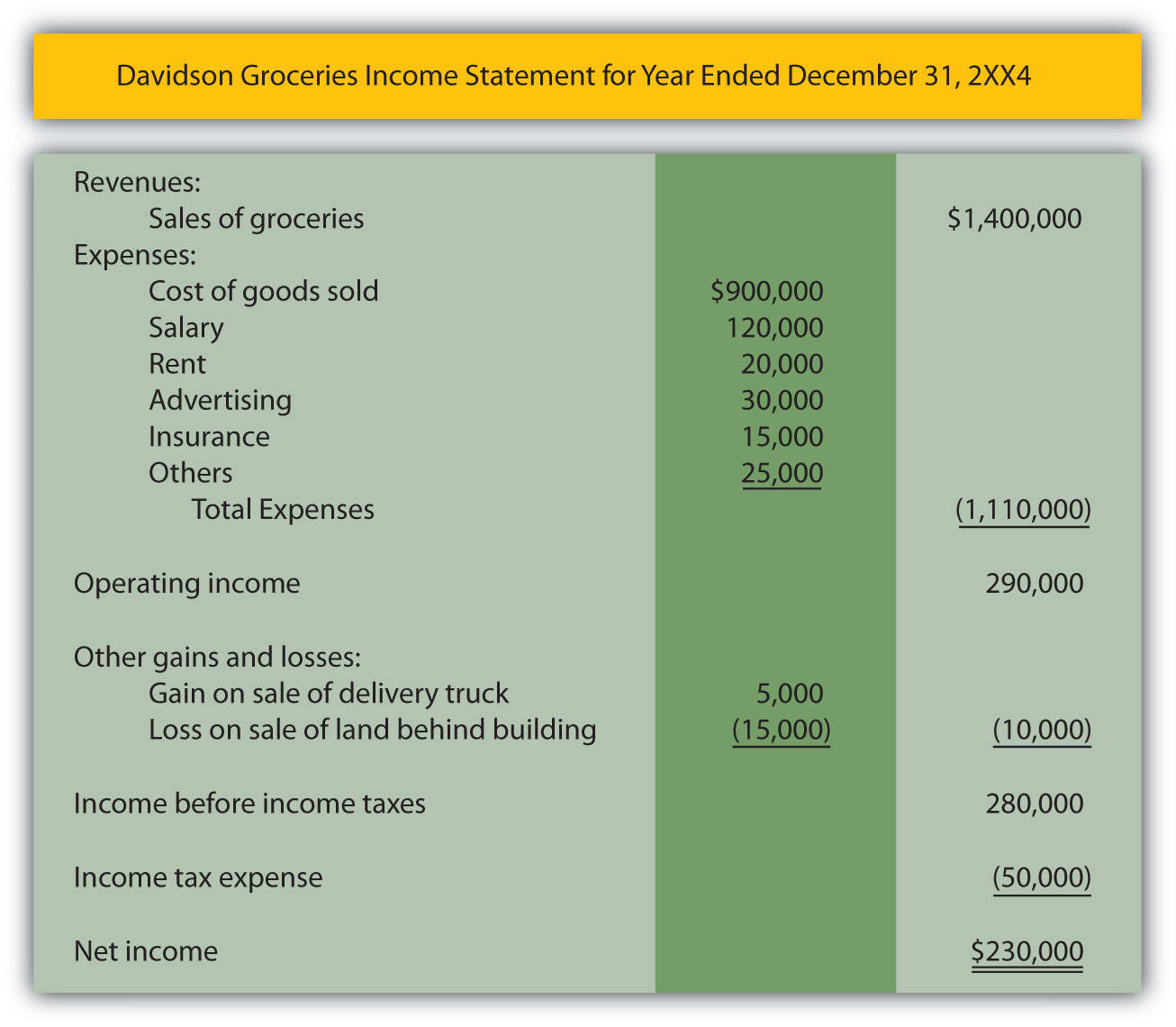

Finance
What Is The Capital Structure Of A Company
Published: December 24, 2023
Learn about the capital structure of a company and its implications on finance. Gain insights into the financial framework of organizations.
(Many of the links in this article redirect to a specific reviewed product. Your purchase of these products through affiliate links helps to generate commission for LiveWell, at no extra cost. Learn more)
Table of Contents
Introduction
In the world of finance, capital structure refers to the mix of debt and equity that a company uses to finance its operations and investments. It is a crucial aspect of financial management, as the decision of how much debt and equity to employ can have a significant impact on the firm’s profitability, risk profile, and value.
Capital structure plays a vital role in determining how a company raises funds to grow its business, acquire assets, and meet its financial obligations. It is a reflection of the company’s financial health and stability, as well as its ability to generate returns for its shareholders.
Understanding the concept of capital structure is essential for both investors and business owners, as it can affect the cost of capital, the risk profile of the company, and the potential returns on investment. By analyzing the capital structure of a company, investors can assess its financial stability and make informed decisions about whether to invest in its stocks or bonds.
Capital structure decisions also have significant implications for the management of a company. Finding the optimal capital structure can help maximize the firm’s value and minimize its cost of capital. It involves finding the right balance between debt and equity financing, taking into account factors such as industry norms, the company’s growth prospects, and its cash flow generation capacity.
In this article, we will delve into the intricacies of capital structure, exploring its definition, importance, components, financing options, and factors influencing the decision-making process. By the end, you will have a comprehensive understanding of capital structure and its role in shaping the financial landscape of a company.
Definition of Capital Structure
Capital structure, in simple terms, refers to the way a company finances its operations through a combination of debt and equity. It represents the composition of a company’s liabilities and equity, highlighting the proportion of debt and equity funding sources.
Debt financing involves raising funds through borrowing from banks, financial institutions, or issuing bonds and other debt securities. On the other hand, equity financing entails raising capital by selling ownership shares in the company, either privately or through public offerings.
The capital structure decision revolves around determining the optimal mix of debt and equity that can maximize the company’s value and minimize its cost of capital. Each component of the capital structure has its own advantages and disadvantages, impacting factors such as risk, control, and tax obligations.
By utilizing debt financing, a company can enjoy the benefits of tax deductibility of interest payments and maintain control over its operations. However, excessive reliance on debt can increase financial risk and interest expense, affecting the company’s ability to meet its debt obligations. On the other hand, equity financing allows a company to share risks and rewards with shareholders but dilutes ownership and can be costlier in terms of dividend payments and shareholder expectations.
It is worth noting that capital structure decisions can vary significantly across industries and companies. High-growth companies, for instance, may rely more on equity financing to fund their expansion plans and minimize the burden of debt obligations. In contrast, mature companies with stable cash flows may leverage debt to take advantage of tax benefits and enhance shareholder returns.
Ultimately, the goal of determining the capital structure is to strike the right balance that optimizes the company’s cost of capital while aligning with its growth strategy and risk tolerance. Finding the optimal mix is a complex process that requires careful evaluation of market conditions, industry norms, and the company’s financial position.
In the following sections, we will explore the importance of capital structure and its various components in more detail, shedding light on the factors that influence capital structure decisions and the potential impact on a company’s financial health and performance.
Importance of Capital Structure
The capital structure of a company holds significant importance as it directly impacts its financial well-being, profitability, and overall value. It plays a crucial role in determining the company’s ability to generate returns for its stakeholders and navigate through economic uncertainties. Here are some key reasons why capital structure is vital:
1. Cost of Capital: The capital structure affects the cost of capital, which is the average rate of return required by investors to support the company’s operations. By finding the optimal mix of debt and equity, a company can minimize its cost of capital and enhance its profitability. Debt financing usually comes with fixed interest rates and tax advantages, making it a cheaper source of capital compared to equity financing, which involves dividend payments and dilution of ownership.
2. Risk Management: Capital structure plays a crucial role in managing financial risk. Too much debt can increase the financial risk, as the company may struggle to meet its debt obligations, leading to potential bankruptcy or financial distress. On the other hand, a higher proportion of equity financing provides a cushion against financial risk by absorbing losses and allowing flexibility in financial decisions.
3. Flexibility: Maintaining a balanced capital structure gives a company the agility to adapt to changing market conditions and unforeseen events. Having access to a mix of debt and equity financing options provides flexibility in raising capital for growth opportunities, research and development, and other strategic initiatives.
4. Ownership and Control: The capital structure determines the ownership and control of a company. Equity financing involves selling ownership shares, diluting the control of existing shareholders. On the other hand, debt financing allows the company to retain ownership but may involve covenants and restrictions that limit managerial decision-making. Striking the right balance in capital structure enables the company to maintain control while meeting its financial needs.
5. Investor Perception: Investors closely examine a company’s capital structure when making investment decisions. A well-structured capital base, with a balanced mix of debt and equity, provides a positive signal about the company’s financial stability, profitability, and growth prospects. This can attract more investors, leading to increased liquidity and higher valuations.
6. Tax Benefits: Debt financing allows companies to deduct interest expenses from their taxable income, resulting in reduced tax obligations. This tax shield provides a cost advantage, making debt financing an attractive option for many companies.
Recognizing and managing the importance of capital structure is essential for business owners, managers, and investors. By carefully evaluating the company’s financial position, risk appetite, growth prospects, and market conditions, they can make informed decisions to optimize the capital structure, enhance profitability, and drive long-term value creation.
Components of Capital Structure
Capital structure consists of several components that collectively define how a company finances its operations. These components represent the funding sources and ownership structure of a company. The main components of capital structure include:
- Debt Capital: Debt capital refers to the funds raised by a company through borrowing from external sources such as banks, financial institutions, or by issuing bonds and other debt securities. This component includes both short-term debt, such as bank loans and lines of credit, and long-term debt, such as corporate bonds and debentures. The cost of debt capital is determined by factors such as interest rates, creditworthiness of the company, and market conditions.
- Equity Capital: Equity capital represents the ownership interests in a company held by shareholders. It is generated through the sale of common stock or equity shares. Unlike debt capital, equity capital does not require repayment and involves sharing ownership rights and profits with shareholders. Equity investors bear the risk of the company and have a claim on the residual assets and earnings after all liabilities have been paid. The cost of equity capital is influenced by factors such as the company’s financial performance, industry reputation, and investor expectations.
- Preferred Stock: Preferred stock is a special class of equity capital that carries certain rights and preferences over common stock. Preferred shareholders have a fixed dividend payment priority over common shareholders and typically do not have voting rights. Preferred stock is considered a hybrid form of financing, as it possesses characteristics of both debt and equity. However, it is classified as equity in the capital structure due to its subordinate position to debt holders in case of liquidation.
- Retained Earnings: Retained earnings are the accumulated net profits of a company that are reinvested back into the business instead of being distributed to shareholders as dividends. Retained earnings form a crucial part of the equity capital component in the capital structure. They represent the equity generated through the company’s successful operations and are considered an internal source of financing.
- Convertible Securities: Convertible securities, such as convertible bonds or preferred shares, provide the flexibility to convert the securities into equity shares at a later date or under certain predetermined conditions. They offer the potential for both debt and equity financing, allowing companies to raise funds through debt issuance while providing an option to investors to convert their holdings into equity shares in the future.
The composition and proportion of these components in a company’s capital structure depend on various factors, including the company’s industry, growth prospects, risk tolerance, and financing needs. Striking the right balance between debt and equity financing is crucial to ensure financial stability, optimize costs of capital, and maximize shareholder value.
In the next sections, we will explore the different financing options within the components of capital structure, such as debt financing and equity financing, and discuss the considerations involved in determining the optimal mix for a company’s financial needs.
Debt Financing
Debt financing is a component of capital structure that involves borrowing funds from external sources to finance a company’s operations, investments, and expansion plans. It is a common method used by businesses to raise capital and comes with its own pros and cons.
Debt financing offers several advantages for companies:
- Lower cost of capital: Debt financing is often cheaper than equity financing. Interest payments on debt are tax-deductible, which reduces the overall cost of debt capital for the company. This enables businesses to take advantage of the tax shield and lower their cost of capital.
- Retain ownership and control: By opting for debt financing, companies can maintain ownership and control over their operations. Unlike equity financing, debt does not involve diluting ownership or giving up voting rights. This allows the management to make business decisions without interference from external shareholders.
- Fixed repayment schedule: Debt financing typically comes with a fixed repayment schedule, which helps in financial planning and budgeting. The company knows the amount of principal and interest to be paid each period, allowing for better cash flow management and financial stability.
- Higher leverage: Debt financing allows companies to leverage their existing assets and generate higher returns on equity. By using borrowed funds to invest in projects, businesses can potentially earn a higher return than the cost of debt, leading to increased profitability and shareholder value.
However, debt financing also has its drawbacks and risks:
- Interest and principal payments: Debt financing comes with the obligation of making regular interest and principal payments, which can be a burden on cash flow, particularly during periods of financial instability or economic downturns. Failure to meet debt obligations could lead to penalties, additional interest costs, or even bankruptcy.
- Financial risk: Taking on excessive debt exposes the company to financial risk. In case of downturns or unforeseen events that affect the company’s cash flow, the ability to meet debt obligations may be compromised, leading to financial distress or default.
- Fixed interest rates: When companies borrow at a fixed interest rate, they are exposed to interest rate risk. If interest rates rise in the future, the company may face higher interest expenses, impacting profitability and cash flow.
- Covenants and restrictions: Debt financing often comes with covenants and restrictions imposed by lenders. These may include limits on additional borrowing, asset sales, or changes in the company’s operations. Non-compliance with these covenants can result in penalties or even default.
Overall, debt financing is an important component of capital structure, offering advantages such as lower cost of capital and maintaining control over the company’s operations. However, careful consideration and risk assessment are crucial to strike the right balance between debt and equity financing and ensure the long-term financial health and stability of the company.
Equity Financing
Equity financing is a crucial component of capital structure that involves raising funds by selling ownership shares in a company. It provides companies with an alternative to debt financing and offers several benefits and considerations.
Here are some advantages of equity financing:
- No obligation for repayment: Unlike debt financing, equity financing does not require companies to make fixed interest or principal payments. Investors in equity shares become partial owners of the company and share in the profits and losses. This alleviates the financial burden of debt repayment and provides flexibility in cash flow management.
- Shared risk and reward: Equity financing allows companies to share both the risks and rewards with shareholders. Investors assume the risk of the company’s performance and are entitled to a portion of the profits. This can attract investors who are willing to take on the risk in exchange for potential long-term capital appreciation.
- No interest expense: Equity financing does not come with interest expenses like debt financing. As a result, companies can allocate their cash flow to other operational needs or reinvest in the business without being burdened by interest payments.
- Long-term financial stability: By raising equity capital, companies can strengthen their balance sheet and improve their financial stability. Equity financing provides a cushion of ownership capital that can support the company’s growth and expansion plans.
However, there are some key considerations and drawbacks associated with equity financing:
- Dilution of ownership: When companies issue new shares to raise equity capital, existing shareholders may experience dilution of their ownership stake. As more shares are issued, the ownership interest of each shareholder decreases proportionately. This can reduce control and decision-making power for existing shareholders.
- Expectations of shareholders: Equity investors become stakeholders in the company and expect to benefit from its success. This may involve the payment of dividends, capital appreciation of their shares, or participating in decision-making processes. Meeting these expectations can be a financial burden and may limit the company’s flexibility in utilizing its profits.
- Disclosure and transparency: Equity financing often involves the issuance of shares to the public, which requires compliance with regulatory and reporting requirements. Publicly traded companies must provide transparency and regular updates to their shareholders, which can increase administrative costs and time commitments.
- Higher cost of capital: While equity financing does not involve direct interest payments, it does require sharing profits with shareholders. This can lead to a higher cost of capital compared to debt financing, as investors expect a return on their investment commensurate with the risks associated with equity ownership.
Equity financing plays a vital role in companies’ capital structure, enabling them to access funds without the burden of debt repayment. It offers advantages such as shared risk and long-term financial stability. However, thoughtful consideration of dilution of ownership and meeting shareholder expectations is essential to maintain a balanced capital structure and ensure the company’s growth and success.
Optimal Capital Structure
The optimal capital structure refers to the ideal mix of debt and equity financing that maximizes a company’s value and minimizes its cost of capital. While there is no one-size-fits-all approach to determining the optimal capital structure, companies strive to find the right balance based on their unique circumstances, industry norms, and financial goals.
The following factors are important considerations in determining the optimal capital structure:
1. Financial Stability: A company’s financial stability is a key factor to consider when determining the optimal capital structure. Excessive debt can increase the company’s financial risk, making it vulnerable to economic downturns. On the other hand, too much equity financing can dilute ownership and potentially restrict growth opportunities. Striking the right balance ensures that the company can meet its financial obligations while maintaining sufficient flexibility for growth and expansion.
2. Cost of Capital: The cost of capital is an important consideration in determining the optimal capital structure. Debt financing is generally cheaper due to interest tax deductibility, while equity financing involves a higher cost due to dividend payments and potential dilution. Companies aim to minimize their weighted average cost of capital (WACC) by finding the right mix of debt and equity that optimizes their cost of capital and maximizes profitability.
3. Industry and Market Considerations: Capital structure decisions can vary across industries due to differences in risk profiles, growth prospects, and industry norms. For example, industries with stable cash flows and low risk, such as utilities, may have a higher proportion of debt in their capital structure. High-growth industries, on the other hand, may rely more on equity financing to fund their expansion plans. Understanding industry dynamics and market expectations is crucial in determining an optimal capital structure.
4. Growth Opportunities: Companies need to consider their growth prospects when determining the optimal capital structure. If a company has significant growth opportunities, it may opt for equity financing to raise capital and minimize debt obligations. This allows the company to retain more earnings for reinvestment and take advantage of potential future value creation. However, companies should also consider the cost of equity and the dilution of ownership when raising additional capital through equity financing.
5. Cash Flow Generating Capacity: The ability of a company to generate consistent and strong cash flows is an important factor in determining the optimal capital structure. Companies with stable and predictable cash flows may be more comfortable taking on additional debt to enhance their returns and shareholder value. Conversely, companies with volatile cash flows may prefer a more conservative capital structure with a higher proportion of equity to mitigate financial risks.
It is important to note that the optimal capital structure is not a static decision and may evolve over time as market conditions, industry dynamics, and company performance change. Regular monitoring and adjustments to the capital structure may be necessary to ensure alignment with the company’s financial goals and changing circumstances.
In summary, the optimal capital structure is a delicate balance between debt and equity financing that takes into account factors such as financial stability, cost of capital, industry considerations, growth opportunities, and cash flow generating capacity. By finding the right mix, companies can enhance their financial performance, minimize risks, and maximize shareholder value.
Factors Influencing Capital Structure Decisions
Capital structure decisions are influenced by various factors that shape a company’s financing choices and determine the optimal mix of debt and equity. These factors are crucial in determining the long-term financial health, profitability, and value creation of a company. Here are some key factors that influence capital structure decisions:
1. Business Risk: The level of business risk faced by a company can impact its capital structure decisions. Industries with higher business risk, such as technology startups or companies operating in volatile markets, may prefer a lower proportion of debt to reduce financial risk. Conversely, companies in stable industries with predictable cash flows may be more comfortable taking on debt to enhance returns and value creation.
2. Cost of Capital: The cost of capital is a significant consideration in capital structure decisions. Companies aim to minimize their weighted average cost of capital (WACC) by finding the right mix of debt and equity financing. The cost of debt is typically lower due to tax benefits and fixed interest rates, while equity financing comes with higher costs due to dividend payments and shareholder expectations. Finding the optimal balance between debt and equity helps minimize the overall cost of capital.
3. Tax Considerations: Tax considerations can impact capital structure decisions, particularly with respect to debt financing. Interest payments on debt are tax-deductible, providing a tax shield that lowers the effective cost of debt. Companies may utilize debt financing to take advantage of tax benefits and reduce their overall tax obligations, improving their cash flow and profitability.
4. Growth Opportunities: The availability of growth opportunities can influence capital structure decisions. Companies with significant growth prospects may look for equity financing to fund their expansion plans and minimize debt obligations. This allows them to retain earnings for reinvestment and take advantage of potential future value creation. However, the cost of equity and dilution of ownership should be carefully considered in relation to growth opportunities.
5. Market Conditions: Market conditions, such as interest rates and investor sentiment, can impact capital structure decisions. In a low-interest-rate environment, companies may be more inclined to leverage debt financing as borrowing costs are relatively low. Conversely, during times of high interest rates or tight credit conditions, companies may opt for equity financing to avoid excessive interest expenses and maintain financial flexibility.
6. Company Size and Life Cycle: The size and life cycle stage of a company can influence capital structure decisions. Startups and smaller companies may rely more on equity financing due to limited access to debt markets and higher perceived risk. As companies grow and become more established, they may have better access to debt financing and use a mix of both debt and equity to support their expansion plans and capital needs.
7. Industry Norms: Industry norms and practices can also impact capital structure decisions. Different industries have varying levels of leverage and risk tolerance. Understanding industry benchmarks and the capital structure choices of peer companies can provide valuable insights when determining the optimal capital structure.
8. Management Philosophy and Risk Appetite: The management philosophy and risk appetite of a company’s leadership team play a significant role in capital structure decisions. Some managers may have a conservative approach and prefer lower leverage to minimize financial risks, while others may be more aggressive in utilizing debt to enhance returns. The management’s assessment of risk and their strategic objectives directly influence capital structure decisions.
It is important for companies to carefully evaluate these factors and make informed decisions regarding their capital structure. By considering the business risk, cost of capital, growth opportunities, market conditions, industry norms, company size, and management philosophy, companies can determine the optimal mix of debt and equity financing that aligns with their financial goals and enhances their long-term success.
Conclusion
Capital structure is a critical aspect of financial management that determines how a company finances its operations and investments. The mix of debt and equity in a company’s capital structure has a significant impact on its profitability, risk profile, and overall value.
In this article, we explored the definition of capital structure and its importance in shaping the financial landscape of a company. We discussed the components of capital structure, including debt capital, equity capital, preferred stock, retained earnings, and convertible securities. We also examined the advantages and considerations of debt financing and equity financing, highlighting how each component affects the company’s financial position and decision-making process.
The optimal capital structure is a balance that maximizes a company’s value and minimizes its cost of capital. Various factors influence capital structure decisions, such as business risk, cost of capital, tax considerations, growth opportunities, market conditions, industry norms, company size, and management philosophy. By carefully evaluating these factors, companies can determine the optimal mix of debt and equity financing that aligns with their financial goals and enhances long-term success.
It is crucial for companies to regularly reassess and adjust their capital structure as market conditions, industry dynamics, and company performance evolve. By maintaining a balanced capital structure, companies can enhance their financial stability, profitability, and value creation.
In conclusion, capital structure decisions play a vital role in shaping the financial health and success of a company. By strategically determining the optimal mix of debt and equity financing, companies can strengthen their financial position, mitigate risks, and drive long-term value for their stakeholders.














